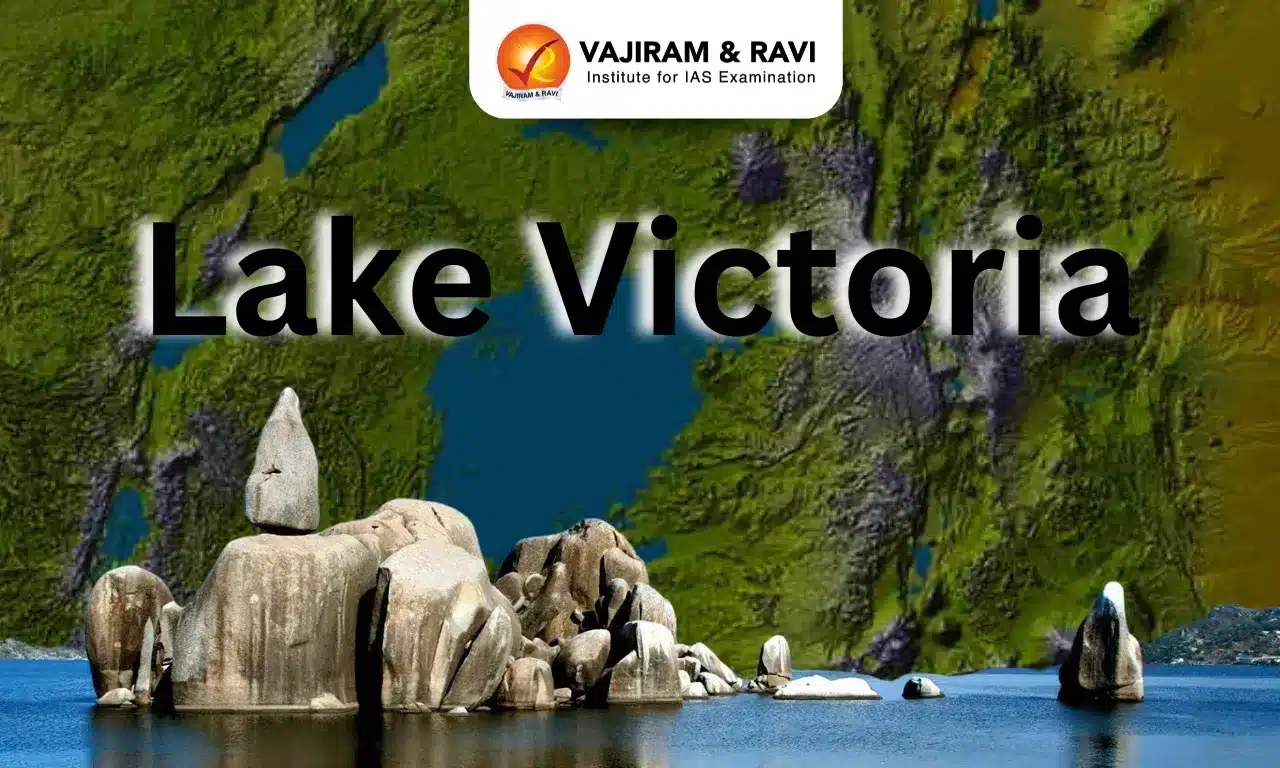Lake Victoria Latest News
An international team of researchers from North America and Kenya has completed a genetic survey of cyanobacteria in the Winam Gulf of Lake Victoria, Kenya.
Lake Victoria Overview
- It is the world’s second-largest freshwater lake located in East Africa.
- Bordering countries: It is bordered by Tanzania, Uganda, and Kenya.
- It is also called Victoria Nyanza in Kenya, Nalubaale in Uganda, and Ukerewe in Tanzania.
- It is a source of the White Nile River which flows northward and eventually joins the Blue Nile in Sudan to form the Nile River.
- The lake supports the largest freshwater fishery in the world, producing 1 million tons of fish per year and employing 200,000 people in supporting the livelihoods of 4 million people.
Key Highlights of the Study
- Cyanobacterial harmful algal blooms (cyanoHAB) events in the Winam Gulf were not restricted to coastal zones but occurred extensively across the gulf.
- Metagenomic analysis showed that bloom-forming cyanobacteria employ diverse survival strategies to adapt to different environmental conditions around the gulf.
- These include extensive use of biosynthetic gene clusters (BGC), which enable the bacteria to thrive in varying conditions.
What is Cyanobacteria?
- Cyanobacteria, formerly known as blue-green algae, are photosynthetic microscopic organisms that are technically bacteria.
- They were originally called blue-green algae because dense growths often turn the water green, blue-green or brownish-green.
- Habitat: These algae are found in all lakes and are a natural part of the lake ecosystem.
- High nutrient concentrations can promote a population explosion of these organisms and result in algal blooms, especially during warm weather.
Lake Victoria FAQs
Q1: In which country is Lake Victoria?
Ans: It is lying mainly in Tanzania and Uganda but bordering on Kenya.
Q2: Why is Lake Victoria so famous?
Ans: It supports the largest freshwater fishery in the world, producing 1 million tons of fish per year and employing 200,000 people in supporting the livelihoods of 4 million people.
Q3: What is the real name of Lake Victoria?
Ans: Victoria Nyanza
Q4: Who discovered Lake Victoria?
Ans: John Hanning Speke
Q5: What is the largest city on Lake Victoria?
Ans: Kampala, Uganda
Source: DTE
Last updated on June, 2025
→ UPSC Notification 2025 was released on 22nd January 2025.
→ UPSC Prelims Result 2025 is out now for the CSE held on 25 May 2025.
→ UPSC Prelims Question Paper 2025 and Unofficial Prelims Answer Key 2025 are available now.
→ UPSC Calendar 2026 is released on 15th May, 2025.
→ The UPSC Vacancy 2025 were released 1129, out of which 979 were for UPSC CSE and remaining 150 are for UPSC IFoS.
→ UPSC Mains 2025 will be conducted on 22nd August 2025.
→ UPSC Prelims 2026 will be conducted on 24th May, 2026 & UPSC Mains 2026 will be conducted on 21st August 2026.
→ The UPSC Selection Process is of 3 stages-Prelims, Mains and Interview.
→ UPSC Result 2024 is released with latest UPSC Marksheet 2024. Check Now!
→ UPSC Toppers List 2024 is released now. Shakti Dubey is UPSC AIR 1 2024 Topper.
→ Also check Best IAS Coaching in Delhi
























